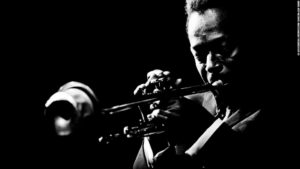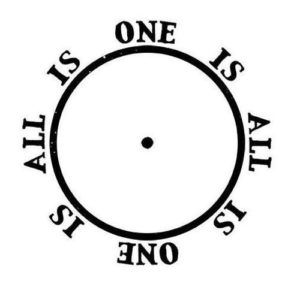 This is an open response to another blog post I had recently read, regarding Jazz and its similarity to a concept in the poem set Logic written by Percival Everett. The concept expressed in the poem set revolved around the idea that the” part is of the whole”, or that the whole consists of parts that make it whole; essentially, something along the lines of “all is one and one is all”—this is both an idea embellished in philosophy and a philosophical idea utilized in entertainment, where I was originally exposed to it.
This is an open response to another blog post I had recently read, regarding Jazz and its similarity to a concept in the poem set Logic written by Percival Everett. The concept expressed in the poem set revolved around the idea that the” part is of the whole”, or that the whole consists of parts that make it whole; essentially, something along the lines of “all is one and one is all”—this is both an idea embellished in philosophy and a philosophical idea utilized in entertainment, where I was originally exposed to it.
First off, I would like to thank you for bringing jazz and more music into a post—I myself am a jazz musician and I light up in joy when I see any references to it or simply see anyone else appreciate it; you looking deeper into Percival Everett’s life was a magnificent choice. There are several instances and allusions to music and jazz in the work we have covered in class, whether that be the music and themes of the song Amen by Jester Hairston sung by Sidney Poitier in Lilies of the field or farther off from our direct work in class. Percival Everett’s use of the name Thelonious Monk Ellison in his book Erasure, is another clear reference to the music, alluding the jazz pianist Thelonious Monk—your discovery of his musical background in Jazz, made the choices he made in his writing even more clear.
Also, what you said about jazz and the part and whole was spot on. Jazz is created through a foundation that will enable improvisation. The foundation is used as surface to develop into more motives and ideas in the moment through improvisation between the musicians playing—this may be the musicians trading fours as you said in your post, where musicians trade solos for four measure each, or simple constructive and intuitive teamwork in both the groove of a song and its characters. In this foundation and the music that arrives with it, it becomes obvious that music is a whole that is no more than its parts that complete it, those parts being the musicians and the work they complete together. Jazz is a truly free art form that allows almost endless expression.
Now that I’ve let that out, I would like to discuss the idea of  the part and the whole idea, which you linked to Jazz. It is quite interesting how many ideas you can discover across several disciplines—it makes me think back to Joe Moran’s use of the phrase “Interdisciplinary”; all disciplines really do share essential ideas and theories. Jazz and its “part and whole” even reminds me of the idea of Monism within the discipline of philosophy. And even further I would like to address the restructured phrasing of the “whole and its parts”: All is one and one is all.
the part and the whole idea, which you linked to Jazz. It is quite interesting how many ideas you can discover across several disciplines—it makes me think back to Joe Moran’s use of the phrase “Interdisciplinary”; all disciplines really do share essential ideas and theories. Jazz and its “part and whole” even reminds me of the idea of Monism within the discipline of philosophy. And even further I would like to address the restructured phrasing of the “whole and its parts”: All is one and one is all.
Just as Moran tells us that all disciplines all linked, this phrase goes further and tells us that all things in the world are interconnected, no matter how disconnected they may appear—beyond any disconnection, everything shares an origin. It gets a little bizarre with the complete concepts in Monism because it starts to tackle the universe as a whole, which is a lot bigger than this world and the disciplines—though some may argue against that ha ha. If I were to explain it on a smaller level, and perhaps a more understandable level, I would use an analogy based on the world. The world is all, and we, the organisms that inhabit it, are the one. The world is extremely large, but the small things like people and animals are also helping the world move forward. Similarly, if you die the world will keep moving. When someone dies, they will decompose and become some form of nutrients for the plants which will become nutrients on a different level, creating a never-ending cycle. It really is just a bizarre idea on life and how the whole depends on its parts.
Even further it asks the question: Is a whole more than the sum of its parts? Another question that can both be asked about the disciplines and be found within a single discipline—it really is interesting how the disciplines share such commonalities.
If you have read this far, I would ask you to think about a statement by Charles T Chapman,
“This is known in philosophy as the problem of the One and the Many. Simply put, although there are many objects in the world, birds, trees, buildings, people, etc., there seems to be a unifying factor amongst them all. Look at the seedling, then the sapling, then the mature tree. While differing in outward form, they are all the same tree. What unifies them? What is the common identity shared by the tree in each of its stages of life?”
Here is a video that accurately presents good trading solos in a jazz tune ( It occurs at 5:18)
